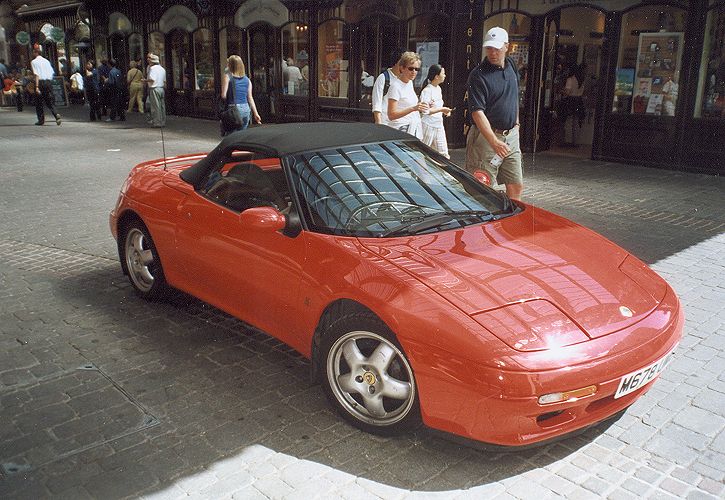Description
The Lotus Elan S2 was introduced in 1964 as the second iteration of the Elan series, refining the formula that had made the original Elan of 1962 such a breakthrough in lightweight sports-car design. Building on the success of the early model, the S2 brought a range of detailed improvements aimed at enhancing comfort, reliability, and production consistency without compromising the car’s exceptional handling and performance. Like its predecessor, the S2 employed Colin Chapman’s signature engineering philosophy of achieving performance through lightness, using a combination of innovative materials, compact dimensions, and carefully tuned mechanical balance to create one of the most responsive road cars of its era.
The Elan S2 retained the same underlying structure that defined the model — a steel backbone chassis supporting a lightweight fibreglass body. This configuration provided both stiffness and low weight, giving the car its famous agility. At under 700 kilograms, the Elan S2 was extraordinarily light, and with its advanced suspension system — double wishbones at the front and independent rear suspension using Chapman struts — it delivered a level of handling precision unmatched by almost any contemporary rival. The steering was unassisted but remarkably quick and communicative, making the car feel instantly connected to the road.
Power came from the same Lotus twin-cam engine developed from the Ford Kent block, displacing 1,558 cc and producing between 105 and 115 horsepower depending on tuning. This engine featured dual overhead camshafts and twin Weber or Stromberg carburettors, offering both flexibility and strong top-end performance. Mated to a close-ratio four-speed manual gearbox, the Elan S2 could accelerate from 0 to 60 mph in around 7.5 seconds and reach a top speed of approximately 120 mph. In an era when most small sports cars struggled to exceed 100 mph, the Elan’s performance, combined with its delicate handling, made it a standout driver’s car that quickly earned a devoted following.
Visually, the S2 remained very similar to the original Elan but featured subtle updates that reflected Lotus’s attention to detail. Chrome trim around the windows and taillights gave the car a slightly more polished appearance, and new wheel designs improved aesthetics and practicality. The interior received minor refinements too, with improved switchgear, upgraded materials, and better weather sealing. While the Elan’s cockpit remained tight, it was designed around the driver, with clear instrumentation, a wooden-rim steering wheel, and low-set seats that placed the driver close to the car’s centre of gravity, reinforcing the sense of precision and control.
Mechanically, the S2 incorporated a number of small but meaningful upgrades aimed at improving durability and usability. These included stronger differential mounts, revised electrical components, and improved door mechanisms. The chassis layout and braking system remained largely unchanged, continuing to deliver outstanding stability and stopping power for the car’s weight. Many of the refinements introduced in the S2 were the result of customer feedback from early Elan owners and demonstrated Lotus’s commitment to continuous development.
The Elan S2 was offered both as a complete factory-built car and in kit form, a common practice at the time that allowed buyers to avoid purchase tax in the United Kingdom. The car’s combination of affordability, performance, and ease of maintenance helped it attract a wide audience, and its success played a key role in establishing Lotus as a serious manufacturer of road cars rather than just a racing marque.
On the road, the Elan S2’s charm lay in its remarkable balance. Its steering precision, supple suspension, and instantaneous throttle response created a sense of connection that few other cars could match. Reviewers of the day praised it for its cornering poise, smooth ride, and ability to make even modest speeds feel exhilarating. It quickly earned a reputation as one of the finest-handling sports cars in the world — a reputation that still endures.
Production of the S2 continued until 1966, when it was replaced by the Elan S3, which introduced further refinements and the option of a fixed-head coupé body. The S2 remains one of the purest expressions of the Elan concept, preserving the original model’s lightness and simplicity while improving its livability.
Today, the Lotus Elan S2 is regarded as a landmark in sports-car design. It influenced generations of cars that followed — most famously the Mazda MX-5 — and continues to be celebrated for its blend of agility, speed, and mechanical elegance. For enthusiasts and collectors, the S2 represents the sweet spot in the Elan lineage: the perfect balance between the raw purity of the early cars and the refinement of the later versions. It is a true embodiment of Colin Chapman’s philosophy that simplicity and lightness are the ultimate paths to performance.


